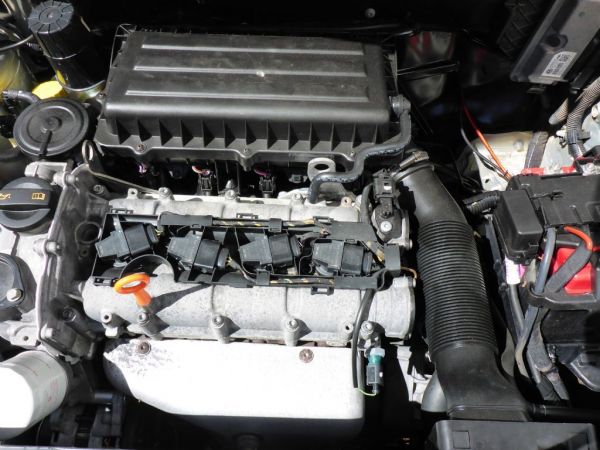Maintain smooth operations with a properly serviced clp engine.
Maintain smooth operations with a properly serviced clp engine.
Blog Article
Just How a Clp Engine Can Enhance Efficiency in Numerous Industries
The advent of CLP engines marks a significant shift in functional performance across different sectors, driven by their ability to enhance gas consumption and decrease downtime. As organizations progressively focus on sustainability together with performance, the role of CLP engines comes to be even much more essential.
Review of CLP Engines
CLP engines, or Continual Fluid Propellant engines, stand for a substantial innovation in propulsion modern technology, specifically for room applications. These engines make use of a continual feed system that enables the sustained expulsion of propellant, resulting in enhanced efficiency and performance contrasted to standard solid or hybrid propulsion systems. By keeping a consistent circulation of fluid propellant, CLP engines can achieve extra exact drive control, which is critical for steering spacecraft in numerous objective circumstances.
The style of CLP engines incorporates advanced materials and cutting-edge gas administration systems. clp engine. This results in lowered weight and increased integrity, necessary elements for long-duration space missions. Moreover, the constant operation lessens the risk of burning instability, an usual challenge in standard rocket engines.

Benefits in Manufacturing
The manufacturing of Continuous Liquid Propellant (CLP) engines presents a number of noteworthy benefits that enhance both effectiveness and cost-effectiveness. Among the key benefits is the structured production procedure, which minimizes the complexity connected with traditional propulsion systems. By using fluid propellant, makers can attain better precision in engine performance, causing optimized energy output and reduced waste.
In addition, CLP engines promote a higher degree of modularity, enabling less complicated integration right into numerous production lines. This adaptability can dramatically lower lead times and improve general functional adaptability. Making use of CLP technology also has a tendency to decrease the requirement for considerable maintenance as a result of less relocating components, which converts right into lowered downtime and functional expenses.

Applications in Logistics
Leveraging Continual Fluid Propellant (CLP) engines in logistics supplies substantial benefits in functional effectiveness and dependability. These engines offer a durable service for different transportation demands, enabling the seamless movement of goods across vast distances. The inherent design of CLP engines allows for go to the website consistent power result, which converts right into smoother and a lot more foreseeable transportation routines.
One of the key applications of CLP engines in logistics remains in sturdy products transport, where they can drive both ground and aerial cars. Their ability to maintain high efficiency under differing lots problems makes sure that shipment timelines are satisfied, thus improving client look at more info complete satisfaction. Furthermore, CLP engines can be integrated into automated logistics systems, facilitating real-time monitoring and maximizing route planning.
In addition, the durability of CLP engines reduces upkeep downtime, allowing logistics firms to optimize their operational capabilities. This is specifically helpful in warehousing operations, where performance in managing and transferring items is important. As logistics proceeds to advance, the integration of CLP engines stands for a forward-thinking approach that not just improves efficiency but additionally supports the sector's growing needs for dependability and rate.
Influence On Power Effectiveness
Just How do Constant Fluid Propellant (CLP) engines enhance power performance in transportation? CLP engines make use of a consistent circulation of fluid fuel, maximizing combustion procedures and maintaining a steady drive output. This layout minimizes power losses related to conventional burning engines, where fuel shipment can differ and result in inadequacies.
The continuous operation of CLP engines permits a more effective thermal cycle, causing greater specific impulse compared to standard engines. clp engine. This converts to reduced fuel usage for the very same quantity of work done, substantially lowering operational costs across numerous transport sectors, including air travel and maritime sectors
In addition, the ability of CLP engines to maintain ideal performance under differing lots problems reduces the requirement for regular velocity and slowdown, better enhancing fuel efficiency. Enhanced energy effectiveness not just adds to set you back financial savings yet additionally results in reduce greenhouse gas emissions, aligning with global sustainability goals.
Future Trends and Innovations
Emerging improvements in Constant Fluid Propellant (CLP) engine technology guarantee to reinvent the landscape of transportation effectiveness and sustainability. As industries pivot toward greener choices, CLP engines stand at the leading edge, incorporating innovative materials and design techniques that enhance performance while minimizing ecological effect.
One of the most encouraging patterns is the adoption of hybrid systems that incorporate CLP engines with sustainable energy sources. This harmony can enhance fuel consumption and lower discharges, lining up with get redirected here global sustainability objectives. Innovations in computational liquid dynamics (CFD) are facilitating the layout of even more aerodynamically reliable engines, leading to lowered drag and boosted gas efficiency.
Furthermore, the development of smart monitoring systems is readied to boost functional effectiveness. These systems leverage data analytics and IoT modern technology to maximize engine efficiency in real-time, ensuring that the engines run within their most reliable criteria.
As research study remains to discover alternate propellant formulations-- such as biofuels and artificial fuels-- the future of CLP engines looks encouraging. By taking advantage of these advancements, markets can not only improve their efficiency yet also contribute significantly to a cleaner, more lasting future in transport.
Final Thought
In verdict, CLP engines represent a significant advancement in efficiency across multiple industries. The assimilation of innovative products and less moving parts minimizes maintenance requirements, while alignment with sustainability objectives placements CLP engines as an essential innovation for the future.
Report this page